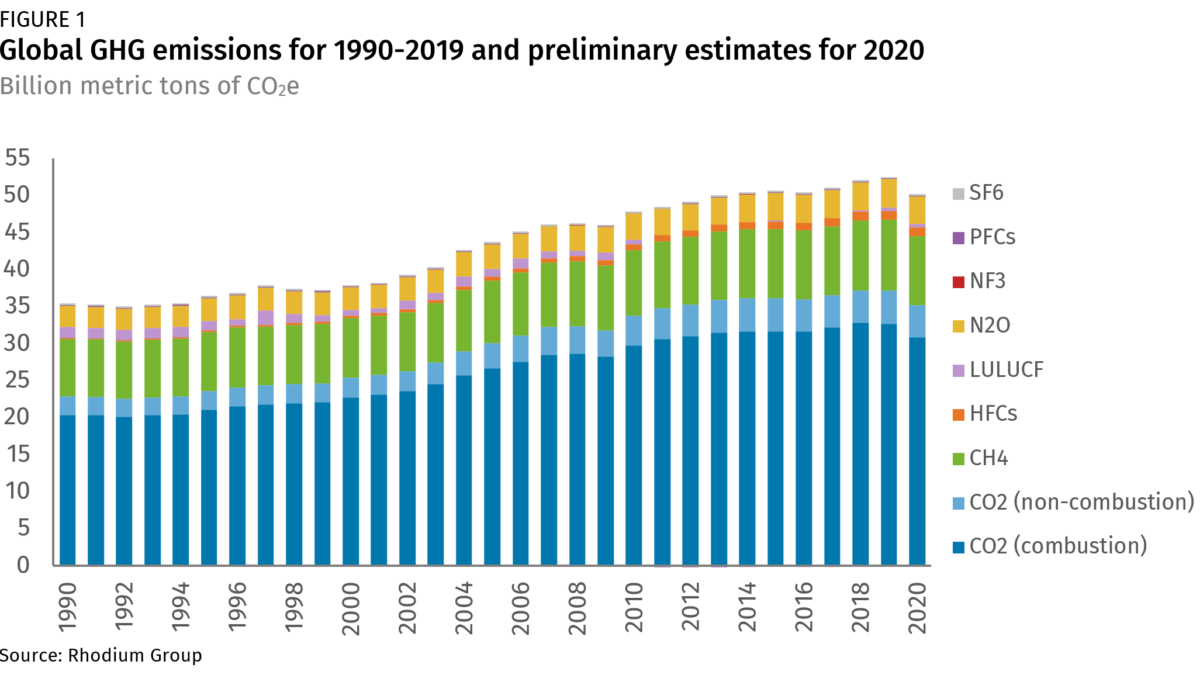Global warming made record-breaking June 2019 European heatwave at least five times likelier – “This is a strong reminder again that climate change is happening here and now. It is not a problem for our kids only.”
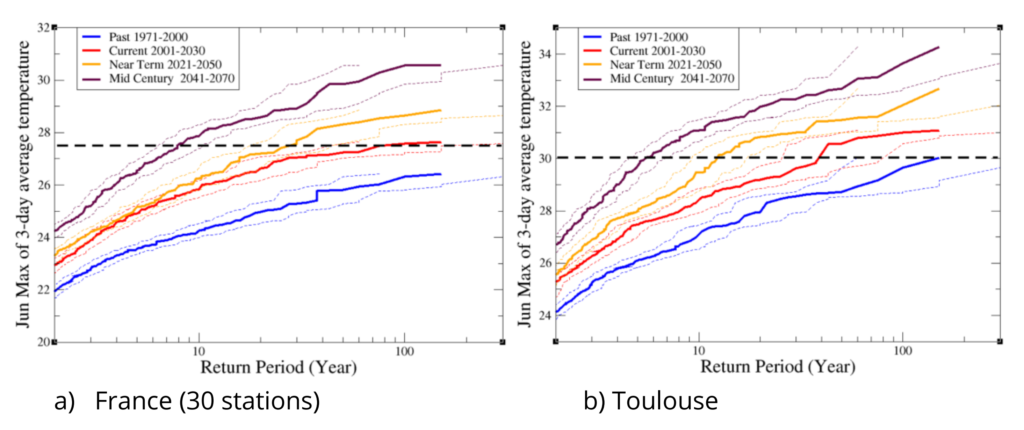
By Damian Carrington
2 July 2019
(The Guardian) – The record-breaking heatwave that struck France and other European nations in June was made at least five – and possibly 100 – times more likely by climate change, scientists have calculated.
Such heatwaves are also about 4C hotter than a century ago, the researchers say. Furthermore, the heatwaves hitting Europe are more frequent and more severe than climate models have predicted.
Last month was the hottest June since 1880, both in Europe and around the world, according to separate data released on Tuesday by the EU’s Copernicus Climate Change Service. In Europe the temperature was 3C above the June average a century ago, and globally it was more than 1C higher.
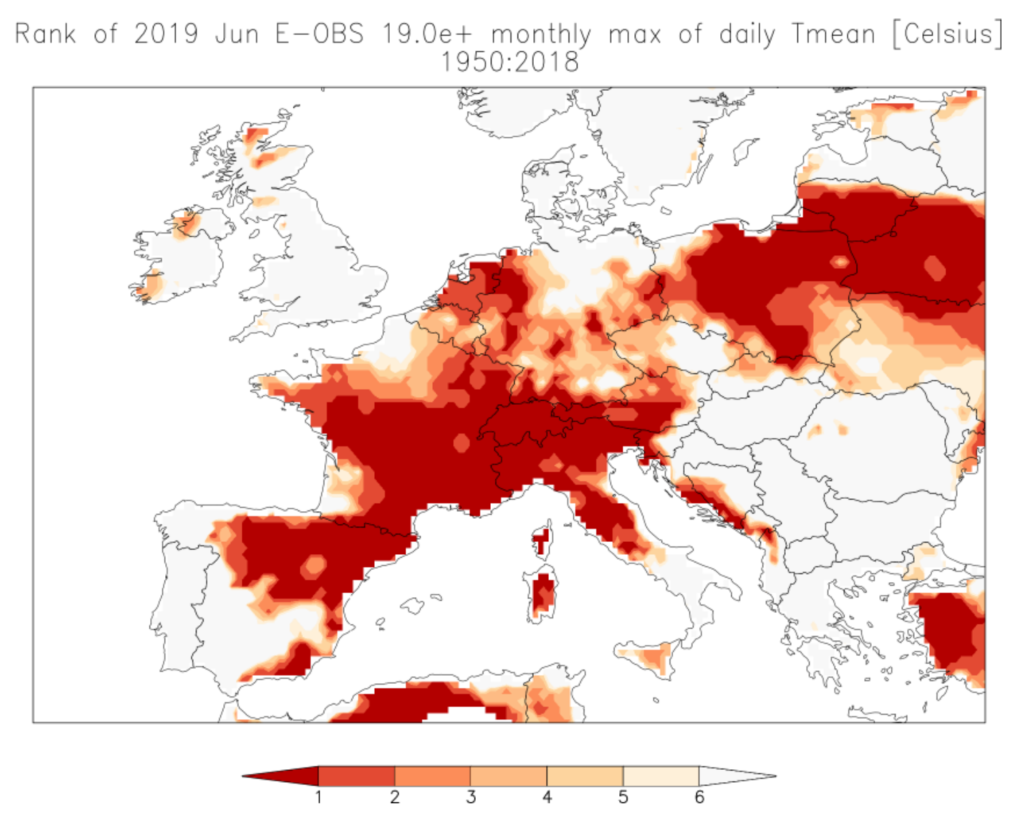
The European heatwave broke temperature records at many locations in France, Switzerland, Austria, Germany and Spain. In France it was broken by more than 1.5C on 28 June, with 45.9C recorded near the city of Nîmes.
The searing heat led to wildfires in Spain and Germany, and widespread disruption across the continent. It is inevitable that the heatwave will have caused many premature deaths, particularly as it occurred outside the usual holiday months when people are more able to take shelter. But these figures take time to compile. The heatwave of 2003 caused more than 70,000 premature deaths across Europe.
Dr Friederike Otto, of the University of Oxford, one of the scientists behind the new analysis, said: “This is a strong reminder again that climate change is happening here and now. It is not a problem for our kids only.”
Another team member, Geert Jan van Oldenborgh, of the Royal Netherlands Meteorological Institute, said: “If the observed trend in heatwaves continues, [even] at the Paris goal of 2C of warming a heatwave like this will be the norm in June. Both observations and models show a strong trend towards stronger heatwaves. However, the observed trend is stronger than the modelled one, and we do not yet know why.” [more]
Climate change made European heatwave at least five times likelier
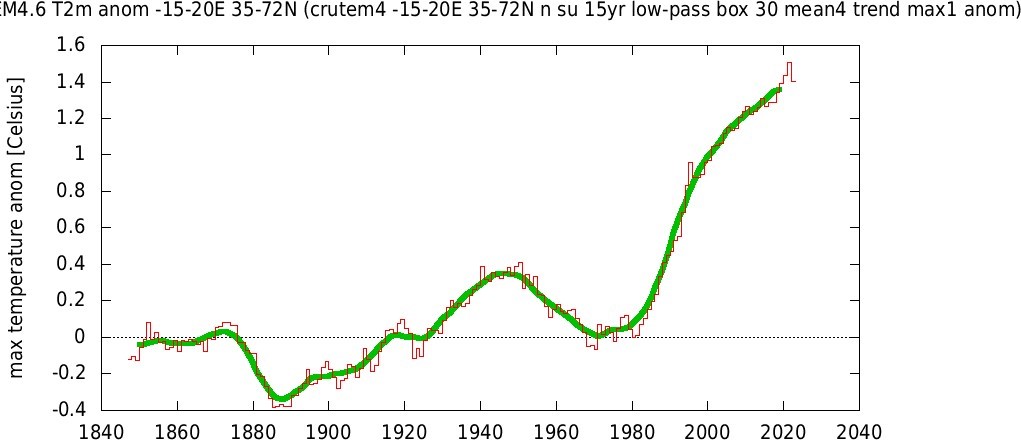
Human contribution to record-breaking June 2019 heatwave in France
2 July 2019 (World Weather Attribution) – A heatwave struck large parts of Europe during the last week of June 2019, breaking several historical records at single locations in France, Switzerland, Austria, Germany, the Czech Republic and Spain.
In particular, the all-time temperature record at a station in metropolitan France (old record 44.1°C in Conqueyrac, Gard) was broken on June 28, with a new record of 45.9°C, more than 1.5°C above the previous, was established at Gallargues-le-Montueux, Gard, near the city of Nîmes. Numerous June records and all-time records at single stations were broken in other countries such as Czech Republic, Spain and Switzerland. In Switzerland new June records were confirmed at more than 40 stations, and new all-time records were confirmed at 6 altitude stations. In Austria and the Netherlands, the whole month of June 2019 was the warmest ever recorded, in a large part due to the heatwave.
Here we present an analysis of the role of human activities in the heatwave, conducted in near real time by using well assessed methodologies. The analysis is not yet peer-reviewed and was written quickly, albeit by scientists experienced in event attribution, working with experts familiar with the conditions in the region studied. We used thoroughly tested methods to do the analysis, evaluation of models and checked the observations for errors.
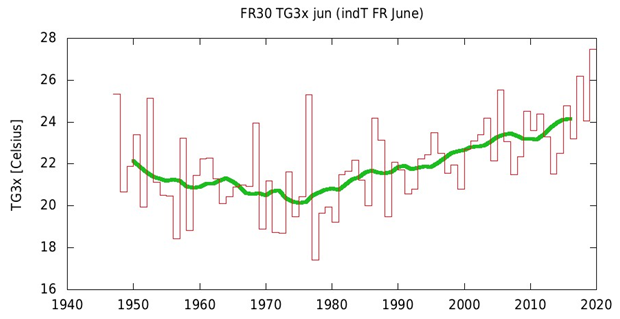
Key findings
- Every heatwave occurring in Europe today is made more likely and more intense by human-induced climate change. How much more depends very strongly on the event definition: location, season, intensity and duration.
- We use an event definition that focuses on health impacts, the three-day average of daily mean temperature. We considered two spatial scales: the whole of France and one city, Toulouse. We only consider June heatwaves because they have a different impact and different trend from heatwaves in July and August.
- The observations show a very large increase in the temperature of these heatwaves. Currently such an event is estimated to occur with a return period of 30 years, but similarly frequent heatwaves would have likely been about 4 ºC cooler a century ago. In other words, a heatwave that intense is occurring at least 10 times more frequently today than a century ago.
- Climate models have systematic biases in representing heatwaves at these scales and show smaller trends, more year-on-year variation and fewer really severe heatwaves than the observations. They simulate an increase in probability of a factor of 2 to 20.
- Heatwaves are deadly, although this is not readily visible at the time. This risk is aggravated by climate change, but also by other factors such as an aging population, urbanisation, changing social structures, and levels of preparedness. The full impact is only known after a few weeks when the mortality figures have been analysed. Heat plans have reduced the impact in France and other countries, and are becoming even more important in light of the rising risks.
Vulnerability and exposure
In France, extreme heatwaves usually occur in mid-summer, when they have less impact on school days and on professional activities than in June or September. Due to the heat in June 2019, the government decided to postpone one national exam, inducing organisational challenges at large scale.
However, the most striking impact of heatwaves, increased mortality, is generally only reported later (with the exception of immediate deaths such as due to drowning when people seek cooling). This “excess mortality” beyond the normal mortality in this period of the year (often taking account of reduced mortality in the following weeks) is calculated on statistical analysis of reported deaths over a longer period of time. This generally means that heatwave mortality, while very significant compared to other disasters in terms of numbers of people killed, often attracts much less public attention that, for instance, deaths due to floods or storms. After 2003 heat plans have been made to better prepare for heatwaves and reduce mortality. These were activated during the 2019 heatwave, and probably helped to reduce the impacts. Better preparedness was also facilitated by the accurate forecast, long in advance, of the National weather service, Météo-France. For instance, a, all-time national record temperature was correctly forecast (to within 1 degree) by forecasters at least three days in advance. [more]
Human contribution to record-breaking June 2019 heatwave in France

